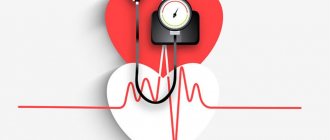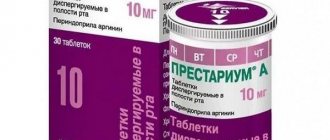Why does a person faint and what is this condition? The brain cannot function normally without a constant flow of blood and nutrients. A sudden disruption of this process causes severe oxygen starvation of brain tissue. The result is a short-term loss of consciousness - usually it lasts a few seconds. The repetition of these cases indicates cardiac and neurological problems in the body, and the causes of fainting are varied. There is no need to delay their diagnosis. Not only fainting, but also pre-fainting conditions should alert you and lead you to a qualified specialist. Now you can undergo a consultation and a set of preparatory examinations when registering for a course of enhanced external counterpulsation or shock wave therapy of the heart absolutely free of charge!
Promotion
Just until the end of autumn, undergo a free consultation and a set of preparatory examinations* when registering for a course of enhanced external counterpulsation or shock wave therapy of the heart.**
Send a request
* Check the details of the Promotion by phone. **Has contraindications; consultation with a doctor is required.
Enhanced external counterpulsation (EECP) Cardiac shock wave therapy (SWTS)
Hurry up to apply, the promotion period is limited.
Symptoms of loss of consciousness
Fainting and loss of consciousness - what's the difference? There is no difference, since fainting is a loss of consciousness for a short time (usually up to 1 minute). The main precursor can be called a pre-fainting state. And speaking about the symptoms of loss of consciousness, most often they mean the symptoms of a pre-fainting state:
- a feeling of lightheadedness and nausea sets in;
- the heart begins to beat quickly;
- circles and “spots” appear before the eyes;
- vision loses clarity;
- a strong pounding appears in the temples;
- cold sweat is produced profusely;
- there is a feeling of imminent fall.
It is at this moment that emergency measures must be taken to prevent loss of consciousness. Timely provision of first aid is also extremely important.
However, fainting can occur quite suddenly, without this “warning”. Its symptoms cannot go unnoticed by others:
- a person suddenly loses his balance and falls in a “sheaf”;
- loss of consciousness occurs;
- the skin becomes pale;
- Limbs may twitch and urine may leak involuntarily.
Having regained consciousness, the person feels overwhelmed and experiences severe drowsiness.
Symptoms and signs of fainting
Very often, syncope occurs suddenly. But sometimes signs of fainting can be noticed in a timely manner and loss of consciousness can be prevented. When you feel faint, the following symptoms appear:
- excessive sweating;
- impending nausea;
- pale skin;
- dizziness and sudden manifestation of severe weakness;
- darkening in the eyes, the appearance of “floaters” before the eyes;
- noise in ears;
- frequent yawning;
- numbness of arms and legs.
If such symptoms are noticed in a timely manner and immediately sit down or lie down, the blood in the vessels will quickly be redistributed, the pressure in them will decrease, and syncope can be prevented. If fainting does occur, then the person will at least protect himself from falling.
The immediate signs of fainting in a person are as follows:
- Extremities become cold.
- The pulse slows down.
- The pupils will dilate or constrict.
- The pressure decreases.
- The skin turns pale.
- The person breathes irregularly and at a lower rate than usual.
- The muscles suddenly relax.
- With prolonged syncope, the muscles of the face and torso may twitch.
- There may be severe drooling and dry mouth.
This state does not last long - from a few seconds to 1-2 minutes. In this case, breathing and heartbeat do not stop, involuntary urination and defecation do not occur, and there is no urge to vomit.
The symptoms of hungry fainting, which occurs due to a lack of nutrients in the body, are similar. Hunger fainting occurs in those who practice very strict diets or prolonged fasting. Such symptoms indicate that nutrition must be adjusted immediately, since hungry fainting is evidence of a deficiency in the body of substances important for its functioning.
Causes of fainting
There are many reasons why people faint, and almost all of them are associated with a sharp decrease in the intensity of blood flow in the brain. Among the most common causes of loss of consciousness are disorders of the nervous system (50% of all cases) and heart pathologies (25%). Also, immediately before unconsciousness may:
- vascular function is impaired due to a pre-stroke condition, atherosclerosis;
- increased pressure in the vessels of the skull due to hydrocephalus, tumor, hemorrhage;
- the amount of sugar and oxygen in the body decreases, which occurs with kidney pathologies, hypoglycemia, anemia;
- decreased circulating blood volume due to bleeding.
Treatment with folk remedies
The use of some folk remedies can help reduce the incidence of syncope. However, these methods are not methods of treating the causes of loss of consciousness, but only auxiliary methods to improve the condition.
- Gentian decoction. To prepare a decoction of this herb, you need to take 2 tsp. crushed raw materials and pour 1 tbsp. boiling water Drink half a glass before each meal.
- Burdock compresses. A fresh burdock leaf should be mashed and placed on the solar plexus. The compress helps you come to your senses after fainting.
- Soothing tea. It helps if a person loses consciousness due to dysfunction of the nervous system. To prepare it, you can take mint, lemon balm, St. John's wort, linden in equal proportions, mix the crushed raw materials, and 2 tbsp. l. pour 2 cups boiling water. After 20 minutes, strain and drink 2 times a day, 1 glass.
- Wormwood oil. Grind 25 g of wormwood seeds in a coffee grinder and pour in 100 g of olive oil. After a day, pour into a dark glass jar and store the product in the refrigerator. Take 2 drops 2 times a day (drop onto sugar).
- Infusion of mountain arnica. 3 tbsp. l. Pour dried arnica flowers into a thermos and pour 200 g of boiling water. After an hour, strain and drink with milk 4 times a day, adding 1 tbsp to 100 g of milk. l. infusion.
- Means for normalizing blood circulation. If loss of consciousness does occur, then after this the person should be given a glass of warm tea or chamomile decoction. Coffee or 1 tbsp will also work. l. cognac to normalize blood circulation.
- Massage of special points. In case of fainting, a massage of the points above the upper lip and under the lower lip will help revive the patient. You need to press hard on them, as sharp pain helps improve blood circulation in the brain. You can also rub the skin in the stomach area for this purpose.
- Cold water. It is sprayed on someone who has lost consciousness. This is especially important if the syncope is caused by overheating. It is recommended to cool the extremities. Also, a person who has come to his senses should drink some cold water in small sips.
Causes of frequent fainting
The causes of frequent fainting are classified into a separate group. They are usually associated with various mental disorders that manifest themselves periodically, for example, hysterical neurosis. A sudden disruption in blood flow can occur with epilepsy. Often first aid for fainting is necessary for people with low blood pressure and diabetes. A drop in vascular tone can cause fatigue, neurosis, and even a simple transition from a sitting state to a standing state and vice versa.
There are also specific causes in women and men that lead to short-term loss of consciousness.
What to do if you have a symptom
It is imperative to know the rules for providing first aid in case of fainting. First of all, it is necessary to restore hemodynamics by placing the torso in a horizontal position. In this case, you need to raise your legs a little.
First of all, it is necessary to create conditions for oxygenation of the brain. To do this, you need to lay the patient down, loosen his belt, tie, unbutton his jacket or shirt. You should also open a window or door to provide fresh air. It is recommended to spray cold water on the face of a fainting person or bring a cotton swab with ammonia to the nose. These actions during fainting will cause reflex stimulation of blood vessels and respiratory centers.
When to urgently call an ambulance
It is necessary to call an ambulance in cases where one of the following symptoms appears:
- fainting lasts more than a minute;
- the victim’s face began to turn blue, especially his lips;
- the victim cannot feel the pulse, there is no breathing;
- the victim woke up, but his heart rhythm was too slow or irregular;
- after fainting, chest pain, difficulty breathing;
- after fainting, the victim immediately falls asleep and cannot be woken up;
- when fainting or after it, convulsions begin;
- after fainting, the victim says that his vision has deteriorated, everything is cloudy before his eyes, it is difficult for him to speak, and his consciousness is confused;
- When a person faints, he is injured when he falls.
In severe cases, with a significant decrease in blood pressure, if standard measures to help with fainting do not help, then sympathicotonics are administered. If the patient has arrhythmia, then antiarrhythmics are used, and in case of cardiac arrest, atropine is administered and chest compressions are performed.
You can call the ambulance team of JSC "Medicine" (clinic of academician Roitberg) by calling +7 (495) 229-00-03. It is best to do this as soon as signs of fainting appear.
When to see a doctor
If fainting begins to appear frequently or is prolonged, you should visit a neurologist for consultation. You should also go to the hospital if you experience the symptoms described above.
First aid for fainting:
- position the patient in such a way as to improve blood supply to the head - raise your legs and try to lower your head a little lower than your body;
- loosen the patient's collar, open the window in the room for air access;
- Sprinkle water on your face, apply ammonia to your nostrils;
- the patient has come to his senses - offer him something sweet;
- If possible, give an intravenous injection of glucose - this will improve blood circulation.
If help for loss of consciousness is provided in a timely manner, the person will feel better within a few minutes.
Consequences and complications
The consequences of such a condition depend on the causes of its occurrence. The most serious consequences may be:
- Development of coma and cerebral edema , which leads to disorders of important life functions.
- Suffocation due to retraction of the tongue in an unconscious state.
- Various injuries received during a fall.
With frequent manifestations of this condition, a person sometimes has to change his occupation.
Types of fainting
In medicine, there are three main types of fainting.
With neurogenic, there is a temporary disorder of cardiovascular reflexes that control the dynamics of blood in the body. This type is varied:
- vasodepressor – consequences of excessively strong emotions, stress, fear, they occur most often;
- orthostatic are caused by a sharp transfer of the body from a lying position to an upright one;
- fainting due to tight collars is explained by too high sensitivity of the carotid sinus;
- loss of consciousness in older men when urinating at night, coughing, defecating - a consequence of a sharp increase in intrathoracic pressure.
If a patient has disturbances in heart rhythm, problems with the conduction of cardiac tissue are observed, and myocardial infarction is diagnosed, then they speak of cardiogenic loss of consciousness.
If, due to sudden fear, panic, or anxiety, a person’s breathing unconsciously quickens and deepens, causing loss of consciousness, such fainting is classified as hyperventilation .
In addition, there are classifications that distinguish:
- maladaptive form - when fainting is caused by adaptation to external conditions (a person overheats, etc.);
- anemic – when the volume of hemoglobin and red blood cells drops sharply, and what remains is not enough to fully supply the brain with oxygen;
- hypoglycemic – when glucose levels in the body drop;
- extreme forms – when the body is exposed to extreme conditions: high mountain air, burns, intoxication with harmful substances, medications.
Diet
Diet for the nervous system
- Efficacy: therapeutic effect after 2 months
- Timing: constantly
- Cost of food: 1700-1800 rubles per week
Nutrition for people prone to fainting should be complete and varied. To choose the right diet, first of all, you need to find out the cause of such manifestations. The diet is formed depending on the presence or absence of heart disease, vascular disease, diabetes mellitus , etc. The basic nutritional rules should be as follows:
- The menu should be dominated by fresh and properly processed products.
- The diet should be varied to provide the body with essential microelements and vitamins .
- It is better to eat food 5-6 times a day in small portions to prevent the feeling of extreme hunger.
- If the state of the body allows, you need to introduce as many vegetables and fruits into your diet as possible.
- Proper drinking regime is necessary, because dehydration can also cause fainting.
If a person experiences reflex fainting, he should adhere to the principles of a diet for the nervous system .
Diseases that cause fainting
Patients with arrhythmia may experience fainting because the blood supply to the brain is sharply reduced. With bradycardia, symptoms of loss of consciousness are also observed. The reasons are a sharp, almost instantaneous drop in heart rate to 30 or even 20 beats per second when the norm is 65-72.
- In addition, patients may need help with fainting:
- pulmonary hypertension;
- dehydration;
- Parkinson's disease;
- with aortic stenosis;
- diabetes mellitus
Fainting is a short-term loss of consciousness that occurs as a result of a short-term decrease in blood flow to the brain. This can happen with heart rhythm disturbances, anemia (a decrease in the level of red blood cells and hemoglobin in the blood, which is accompanied by a decrease in the blood’s ability to carry oxygen to the body’s tissues), a decrease in blood sugar levels and other diseases.
Vasovagal syncope is the most common. For some people, they are a reaction to strong emotional shocks (for example, the sight of blood). The heart rate and blood pressure decrease, causing blood flow to the brain to decrease and the person to lose consciousness. This type of fainting does not require special treatment.
In order to identify diseases that may manifest as fainting, the patient is examined. Treatment is aimed at eliminating the cause of fainting (the primary disease).
Synonyms Russian
Syncope, syncope.
English synonyms
Syncope, fainting.
Symptoms
The following symptoms may occur before fainting:
- pale skin,
- dizziness,
- nausea,
- cold sticky sweat
- feeling of warmth,
- narrowing of the field of vision - a person sees only objects in front of him.
General information about the disease
There are different types of fainting, depending on the causes that cause them:
Neurogenic fainting is a group of conditions in which the reactions of the cardiovascular system, which serve to maintain normal blood circulation of organs and tissues, go wrong when certain factors influence the body. This slows down the heart rate and dilates the blood vessels in the legs. This leads to blood pooling in the lower extremities and a drop in blood pressure. As a result, blood flow to the brain is sharply reduced and fainting occurs.
1. The most common type of fainting is vasovagal. Their causes may be anxiety, fear, fright, prolonged standing, pain, the sight of blood, etc.
2. There are many factors that cause reflex fainting:
- sneezing, coughing,
- swallowing, defecation,
- urination,
- exercise stress,
- meal.
This type of fainting is typical for patients with diseases of the esophagus, larynx, or with irritation of the pleura or peritoneum, for example, due to puncture.
3. Fainting due to orthostatic hypotension is caused by a drop in blood pressure when the patient moves to an upright position, when blood supply to the brain decreases. The reason for this is the weakening of the influence of the autonomic (autonomic) nervous system on vascular contraction when changing body position. The autonomic (autonomic) nervous system controls body functions that a person cannot consciously influence (frequency, heart rate, vascular lumen size, breathing, etc.).
Possible reasons for this condition:
- primary autonomic failure, that is, diseases of the autonomic nervous system itself that disrupt its normal functioning;
- secondary autonomic failure due to diabetes mellitus, amyloidosis (with this disease, normal tissue of internal organs is replaced by a certain type of protein), alcoholism;
- decrease in circulating blood volume after bleeding, severe vomiting, diarrhea;
- taking certain chemicals - alcohol, medications (mainly drugs acting on blood vessels), etc.;
- diseases of the heart and blood vessels - disturbances in the functioning of the heart valves, disturbances in the coordinated activity of the atria and ventricles of the heart, disturbances in the rhythm of heart contractions;
- hypoglycemia – decreased blood sugar levels;
- epilepsy is a disease characterized by seizures,
- anemia - a decrease in the number of red blood cells and hemoglobin in the blood (as a result, the amount of oxygen that the blood brings to the brain decreases);
- mental disorders;
- cerebrovascular diseases - disturbances in the blood supply to certain areas of the brain, leading to pathology of nerve cells.
Who is at risk?
Risk groups include:
- patients with heart disease,
- suffering from diabetes mellitus,
- alcohol abusers,
- taking medications to lower blood pressure,
- persons whose relatives have fainting spells,
- elderly people.
Diagnostics
The purpose of diagnosis is to identify diseases that may cause fainting. Laboratory methods play an important role.
- Complete blood count (without leukocyte formula and ESR). Allows you to determine the number of red blood cells, platelets, leukocytes, hemoglobin in red blood cells. A decrease in the content of red blood cells and hemoglobin (anemia) causes a decrease in the amount of oxygen carried by the blood. This may cause fainting.
- Blood glucose. Glucose is the main type of carbohydrate that is used as a source of energy in the body. The brain requires a constant supply of glucose to function properly. Decreased glucose levels can cause fainting.
- Troponin I is a protein found in cardiac muscle. Its level is measured when heart disease is suspected. It is involved in the contraction of the heart muscle. When the heart is damaged, the concentration of troponin in the blood increases.
- Tilt test: the patient is placed on a special table, which brings him from a horizontal to a vertical position. At the same time, blood pressure, heart rate and rhythm are recorded, which makes it possible to identify how changes in body position affect these indicators.
- Holter monitoring is a method that monitors heart function throughout the day. A special device is attached to the human body, which records a cardiogram around the clock. This allows you to evaluate the activity of the heart under various physical and mental stresses that a person may be exposed to in everyday life.
- An electrocardiogram is a method of studying the electric fields that are formed during the work of the heart. Electrodes are placed on the surface of the skin and an electrocardiogram is recorded.
- Echocardiography is an ultrasound method for examining the heart. Allows you to obtain an image of the structures of the heart and identify the presence of disturbances in the functioning of the heart valves.
- Computed tomography of the brain is a method based on the action of x-ray radiation. Allows you to obtain layer-by-layer images of the internal structures of the human body. The method is important in diagnosing brain diseases, one of the manifestations of which may be loss of consciousness.
Additional Research
- Chest X-ray is a valuable method for diagnosing lung diseases. One of the causes of fainting in elderly patients may be pneumonia (pneumonia). In this group of patients, pneumonia can occur without fever and pronounced characteristic manifestations.
The scope of the examination is determined by the attending physician.
Treatment
Treatment depends on the identified causes of fainting. Vasovagal syncope requires special treatment only in some cases. Drugs that normalize blood pressure, act on the blood vessels of the human body, and antidepressants are prescribed. If a disease is identified, the manifestation of which is fainting, treatment is aimed at this disease.
Prevention
People prone to fainting should avoid situations that cause them to occur. Eating regularly and drinking enough fluids also help prevent fainting. If you feel the approach of fainting, you need to lie down and raise your legs up - this will increase blood flow to the brain. When you can't lie down, you can sit down and put your head between your knees. These actions will help prevent loss of consciousness.
Recommended tests
- General blood analysis
- Blood glucose
- Troponin I (quantitative)
Diagnostics
The initial examination consists of listening to the patient’s complaints about the frequency and duration of fainting states, and determining the conditions under which loss of consciousness occurs. A neurological examination is performed.
The patient must be sent for laboratory blood tests.
Among instrumental studies, the most effective are:
- various types of ECG;
- echocardiography;
- computer sphygmomanometry;
- cardiac rhythmography;
- 24-hour blood pressure monitoring;
- duplex scanning of blood vessels.
These are the most modern diagnostic methods that identify the objective cause of fainting and allow you to prescribe optimal treatment.
Diagnostic measures
MRI of the brain
- Cost: 14,000 rub.
More details
Diagnosis begins with an initial appointment with a neurologist. First, the doctor will try to find out in what circumstances, under the influence of what provoking factors, loss of consciousness develops. To establish a final diagnosis, you will need to undergo a series of instrumental examinations.
Thus, if cardiogenic fainting is suspected, the patient is referred for an ECG, echocardiography, and also for consultation with a cardiologist. If epilepsy is suspected, an electroencephalogram is performed. It is also common to take a blood sample to check blood sugar levels to rule out hypoglycemia. If anemia is suspected, it is necessary to conduct a blood test for hemoglobin content. If there is a possibility of neurological or organic diseases of the brain, then MRI and/or vascular examination are prescribed.
Treatment is carried out on an outpatient basis; it is enough to undergo an examination and receive treatment prescriptions.
Prevention
Knowing what to do if you faint, you also need to take preventive measures:
- eat rationally (it is better to consult your doctor about your individual diet);
- Moderate physical activity must be present;
- walk at least 2 hours a day;
- Women during pregnancy should regularly visit a gynecologist;
- eliminate extreme loads and overheating;
- Among medications, the doctor may prescribe nootropics, venotonics, adaptogens, and vitamins.
Diagnostics and treatment at the Center for Pathology of the Circulatory Organs
At the CBCP clinic you have modern European diagnostic equipment, advanced research methods and highly qualified doctors at your service.
Even if you have experienced a fainting state once, this is already a reason to see a doctor. And repeated fainting is a mandatory reason to visit a cardiologist and conduct professional diagnostics. Timely detection of cardiac pathology is far from a death sentence. The CBCP cardiology clinic will select an individual treatment program, and your body will return to tone.
List of sources
- Bova A.A. Syncope in clinical practice: educational method. allowance. – Mn.: Asobny, 2009. – 45 p.
- Autonomic disorders: Clinic, treatment, diagnosis / ed. AM Wayne. – M., 1998. – 752 p.
- Guseva I.A., Bondareva Z.G., Miller O.N. Causes of syncope in young people // Ros. cardiology journal. - 2003. - No. 3. — P. 25-28.
- Stykan O.A. Akimova G.A. Differential diagnosis of nervous diseases: a guide for doctors. - St. Petersburg: Hippocrates, 2000. - P. 132-177.










